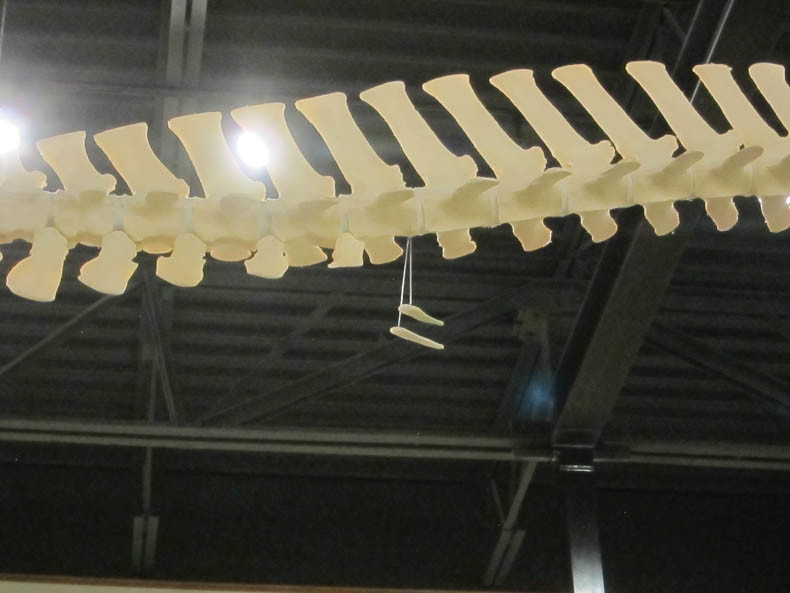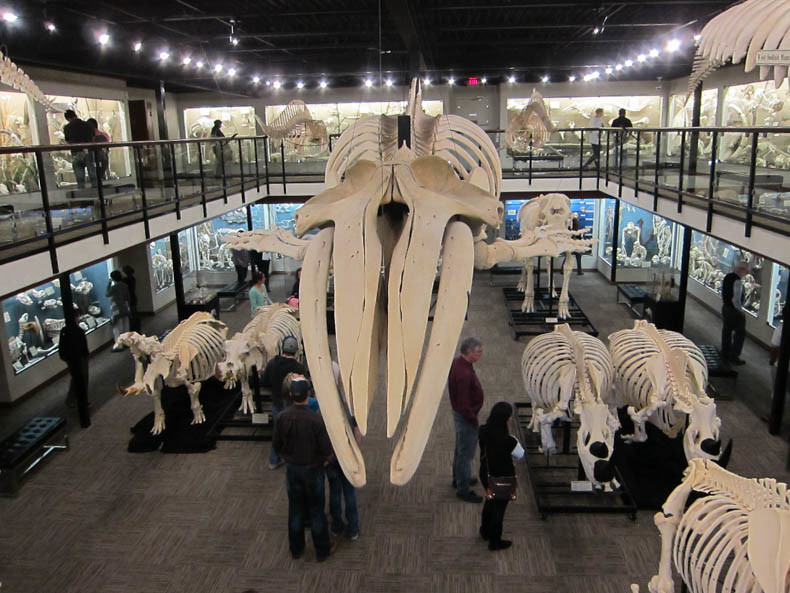This post originally ran March 31, 2015.
I knew what I expected from the Museum of Osteology in Oklahoma City: amusement. I go to a lot of museums, and in my experience, privately-run museums based on one person’s obsession are always quirky and often pretty fun. This museum was founded by a guy and his wife who have a business next door cleaning skulls. (Apparently there are enough people who need skulls cleaned to support this business.)
But here’s the thing: It was a surprisingly interesting and educational visit. The skeletons are well organized and set up for maximum learning. The contents communicate stories about anatomy and evolution–don’t worry, there was a human in the ape corner, right next to our cousins the bonobo and the gorilla.
Osteology is the study of bones. Bones are an organ like any other. They make blood cells and provide a reservoir of calcium, which you need to make your cells work. They coordinate with the muscles and the tendons to move you around and keep you moving at dance parties.
A bone is one of the few organs you can really imagine having its own museum. Imagine a museum of hearts or lungs. Ok, the skin, yes, after it’s been properly cleaned, mounted on a mold in the shape of the animal that grew them, and posed in a diorama. The lower level of the medical library at Yale University has a ghoulish collection of brains, preserved in jars. But muscles? Blood? A museum of digestive systems? Harder to imagine.
Bones, though–bones are worth looking at, if you clean them and reassemble them into a skeleton. Right there in the lobby of the museum is a case showing off one phase in that cleaning process: bugs. Flesh-eating beetles clean all the soft tissue off the bones.
The skeleton that I’m built on isn’t the only difference between, say, me and a bonobo and a turtle and a snake, but the skeleton presents a lot of differences that are easy to see. The museum has all of those animals and many more on display in cases, with a space in the middle for the big stuff, like the giraffes, a pair of hippos, and some whales hanging from the ceiling.
Fun fact about whales: They’ve hung onto a tiny pelvis. Mammals originally evolved on land and the whales had a terrestrial ancestor with four legs. As they moved to the oceangoing lifestyle, they lost their hind limbs, but a wee pelvis hung around. The next time you see a whale skeleton hanging in a museum, look for a pair of bones hanging under the spine in the back, unconnected to any other bones. Like this:
 I learned to call this pelvis vestigial, but a study published last fall in the journal Evolution suggests it actually has a use: helping the males maneuver their penis during mating.
I learned to call this pelvis vestigial, but a study published last fall in the journal Evolution suggests it actually has a use: helping the males maneuver their penis during mating.
On my visit I learned and promptly forgot the difference between old world and new world monkeys, and was reminded of the difference between horns and antlers. (Antlers are bone and are shed every year; horns are based on keratin, like hair and fingernails, and stay attached.) Other displays included a whole array of dog skulls–I couldn’t help pitying the poor pug, with its underbite–and a collection of deformed calves, including one with two heads.
The museum has only been open since 2010, so it hasn’t had time to get out of date. Also, I learned on my visit, they throw kids’ birthday parties and have a surprisingly entertaining scavenger hunt. In the adult version, you have to look for facts like the name for the group of flightless birds that includes the emu and the ostrich, which I should have known off the top of my head but couldn’t think of. For the kids’ version, you count the penguins.
I will admit that I was very tempted by a book in the gift shop that explains how to prepare your own whale skeleton for display. I know it’s unlikely that I’d come across any beached whales in my neighborhood, 100 miles from the nearest ocean. But I’d like to be prepared.
Photos: Helen Fields
